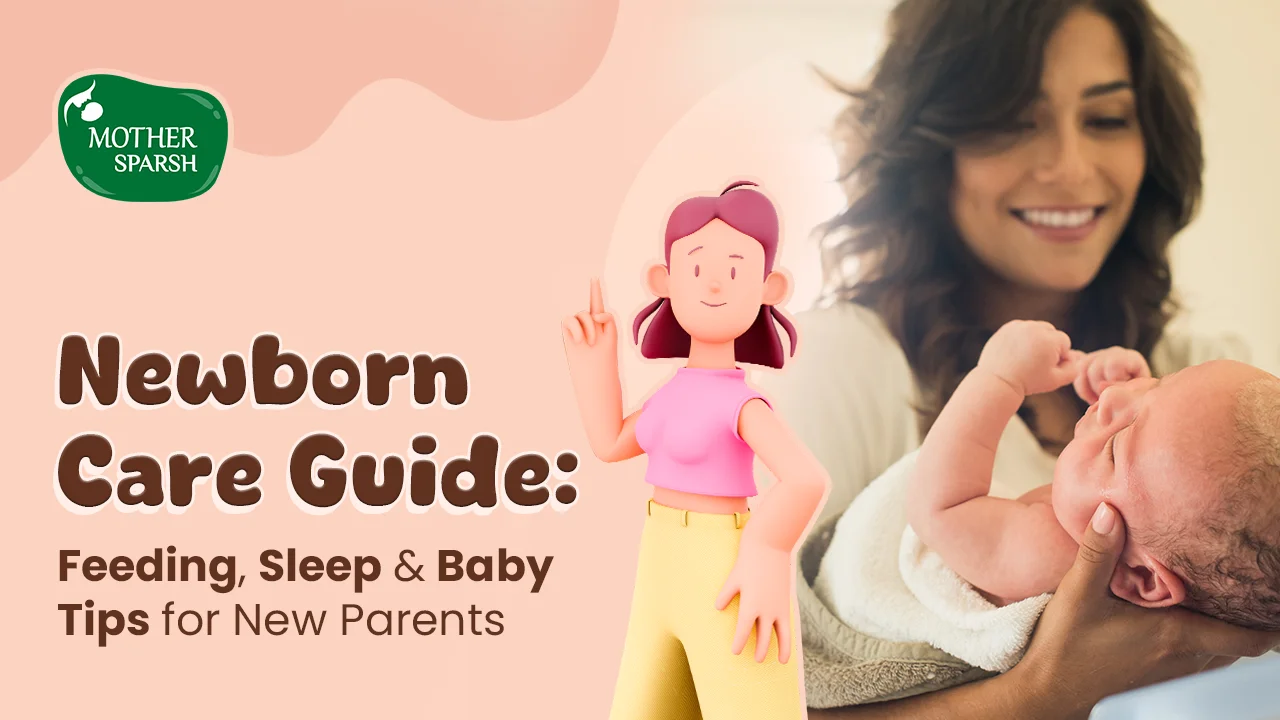Essential Newborn Care A Confident Start
The initial weeks with a newborn are a crucial period for adjustment, establishing routines, and fostering deep connections. Understanding key practices from hospital care to daily bonding activities can ensure a smoother and more confident start to this new chapter.
Initial Hospital Care Your Baby’s First Checks
Upon birth, your baby undergoes immediate assessments. The Apgar score, taken at one and five minutes, evaluates your baby’s appearance, pulse, grimace response, activity, and respiration, providing a quick health overview Source: Mayo Clinic. Hospital staff perform a thorough physical exam, weigh and measure your baby, and administer essential medical interventions. These often include a Vitamin K shot to prevent bleeding disorders, antibiotic eye ointment for infection protection, and the first dose of the Hepatitis B vaccine Source: Cleveland Clinic. Comprehensive newborn screening tests, such as blood tests for metabolic and genetic disorders and hearing screenings, are also conducted before discharge to detect potential issues early Source: HealthyChildren.org (AAP). Before leaving, parents receive vital education on newborn care, including feeding, diapering, cord care, and recognizing signs that warrant medical attention.
Safe Sleep Practices A Foundation for Health
Creating a safe sleep environment is paramount to reducing the risk of Sudden Infant Death Syndrome (SIDS). The American Academy of Pediatrics (AAP) strongly recommends the following guidelines Source: HealthyChildren.org (AAP):
- Back to Sleep: Always place your baby on their back for all sleep times.
- Firm, Flat Sleep Surface: Use a firm mattress with a fitted sheet in a crib, bassinet, or play yard meeting safety standards.
- Alone in Their Own Space: Your baby should sleep in your room, but in their own separate sleep area, not in an adult bed, couch, or armchair. Room-sharing for the first six to twelve months lowers SIDS risk.
- No Loose Bedding: Keep the sleep area clear of loose blankets, pillows, bumpers, soft toys, or any other soft objects. A wearable blanket or sleep sack is a safe alternative.
- Avoid Overheating: Dress your baby in light sleep clothing and keep the room at a comfortable temperature. For more information, read our guide on Is Your Baby Overheating? Signs Your Baby Is Too Hot.
- Consider a Pacifier: Offering a pacifier at nap time and bedtime, once breastfeeding is well-established, can help reduce SIDS risk.
The Power of Skin to Skin Contact
Skin-to-skin contact, or Kangaroo Care, involves holding your naked baby directly against your bare chest, covered for warmth. This simple practice offers significant benefits for both baby and parent Source: HealthyChildren.org (AAP):
- For Baby: Helps regulate heart rate, breathing, and body temperature, stabilizes blood sugar, promotes deeper sleep, reduces crying, and boosts brain development.
- For Parents: Stimulates oxytocin release for bonding, reduces stress, and aids in milk production. It helps both parents feel more connected and confident.
Establishing Early Bonding Beyond Skin to Skin
Bonding is a gradual process strengthened through daily interactions Source: KidsHealth:
- Respond to Cues: Promptly responding to cries builds trust and security.
- Eye Contact and Facial Expressions: Engage in sustained eye contact and mimic expressions to aid communication development.
- Talk, Sing, and Read: Hearing your voice helps babies feel safe, loved, and supports language development.
- Gentle Touch and Massage: Cuddling, rocking, and gentle massages convey affection and security.
- Involve Both Parents: Shared caregiving strengthens multiple family bonds.
The Profound Importance of Sleep for Child Development
Sleep is a fundamental pillar of a child’s overall development, impacting physical growth, emotional well-being, and cognitive abilities. During sleep, a child’s body and brain are highly active, undergoing essential processes vital for healthy development.
Cognitive Benefits of Sleep
Adequate sleep is crucial for brain development and learning, playing a significant role in memory consolidation and information storage. Well-rested children typically have better attention spans, problem-solving skills, and academic performance Source: Sleep Foundation. Sleep deprivation can lead to concentration difficulties, poor decision-making, and behavioral problems Source: CDC.
Emotional Regulation and Mental Health
A well-rested child is generally happier and more resilient. Sleep regulates mood and emotional responses; insufficient sleep often leads to irritability, tantrums, and difficulty managing emotions Source: Sleep Foundation. Chronic sleep issues can increase the risk of mental health challenges like anxiety and depression in children and adolescents Source: NCBI. For anxious children, improving sleep habits can be a key strategy for well-being, and there are ways to replace anxiety with self-confidence.
Physical Growth and Health
Sleep is a period of significant physical restoration and growth. During deep sleep, the body releases growth hormone, essential for bone and muscle development Source: Stanford Children’s Health. Sleep also strengthens the immune system, helping children fight infections Source: Mayo Clinic.
Recommended Sleep Hours by Age
Sleep needs vary by age Source: CDC:
- Infants (4-12 months): 12-16 hours (including naps). For more guidance, explore how much babies sleep in their first year.
- Toddlers (1-2 years): 11-14 hours (including naps). If your toddler won’t sleep, strategies are available.
- Preschoolers (3-5 years): 10-13 hours (including naps).
- School-aged children (6-12 years): 9-12 hours.
- Teenagers (13-18 years): 8-10 hours.
Addressing challenges like a baby waking up every hour is crucial for optimal development.
Navigating the Social World Friendship and Peer Pressure in Adolescence
Adolescence is a critical period for social development, with focus shifting to peers. Friendships offer emotional support, belonging, and identity exploration, refining social skills and strengthening self-sense Source: National Library of Medicine. Healthy friendships boost self-esteem and buffer against challenges Source: Dr. Baby Care.
The importance of peer relationships also introduces peer pressure, which can be positive (encouraging academic success) or negative (risky behaviors) Source: American Academy of Child and Adolescent Psychiatry. Negative pressure can impact decision-making, leading to anxiety or a decline in self-confidence, especially for those with low self-esteem.
Parents can help by fostering open communication about friendships and pressures Source: HealthyChildren.org. Encouraging critical thinking empowers teens to make independent decisions. A judgment-free home strengthens resilience. Guiding them towards positive peer relationships and activities aligns with their interests, helping them build strong support networks and resist negative influences, enabling them to thrive.
Teen Self Esteem Understanding the Facts and How Parents Can Help
Self-esteem is critical for a teenager’s mental and emotional well-being. Many adolescents struggle with low self-worth, exacerbated by societal pressures and social media. Understanding this prevalence and impact is crucial for parents and educators.
Teen Self-Esteem Statistics The Landscape
A significant proportion of teenagers grapple with self-esteem issues. A 2017 American Psychological Association study found body image concerns prevalent, with 61% of adolescent girls and 46% of boys dissatisfied with their bodies Source: American Psychological Association. These concerns are often fueled by idealized social media images, leading to comparisons and inadequacy Source: Pew Research Center. Nearly half of teenagers, especially girls, express appearance and body image concerns, significantly impacting self-esteem Source: Well+Good.
Low self-esteem is strongly linked to anxiety, depression, and eating disorders. A *Psychological Bulletin* meta-analysis highlighted a strong correlation between low adolescent self-esteem and later mental health problems Source: Psychological Bulletin. Teens with low self-esteem are more likely to experience depression and anxiety symptoms. For more insights, see 4 Ways to Replace Anxiety with Self-Confidence. Low self-esteem can also lead to risky behaviors, academic struggles, or social withdrawal. Social media can further influence a teen’s self-esteem, contributing to inadequacy or pressure Source: Dr. Baby Care. Fostering high self-esteem leads to greater resilience, better decision-making, and improved relationships Source: NCBI.
How Parents Can Foster Healthy Self Esteem
Parents play a pivotal role in nurturing self-worth:
- Provide Unconditional Love and Support: Ensure your teen feels loved and valued, regardless of achievements or mistakes. This builds a secure base Source: UNICEF.
- Encourage Strengths and Passions: Help teens identify and pursue activities where they feel competent. Celebrate efforts, not just perfect outcomes.
- Foster Open Communication: Create a safe space for sharing thoughts and feelings without judgment. Active listening and empathy boost confidence Source: Dr. Baby Care.
- Set Realistic Expectations: Avoid undue pressure for perfection. Help them see mistakes as learning opportunities Source: HealthyChildren.org.
- Teach Problem-Solving Skills: Empower teens to tackle challenges independently, building competence and resilience.
- Promote Healthy Habits: Encourage balanced diet, regular exercise, and adequate sleep for overall well-being and self-esteem Source: Dr. Baby Care.
If you observe persistent signs of low self-esteem, such as prolonged sadness or withdrawal, seek professional help. Resources are available to support teens struggling with mental health Source: Dr. Baby Care.
Sources
- American Academy of Child & Adolescent Psychiatry – Peer Pressure (FFF-Guide-033)
- American Academy of Child & Adolescent Psychiatry – Promoting Self-Esteem In Adolescents (FFF-Guide-080)
- American Psychological Association – Many girls and women are concerned about body image
- Centers for Disease Control and Prevention (CDC) – Children’s Sleep: How Much Do Kids Need?
- Cleveland Clinic – Newborn Baby Care: What to Expect in the First Few Weeks After Birth
- Dr. Baby Care – 10 Most Damaging Things Parents Say to Their Kids
- Dr. Baby Care – Do you have an anxious child with low self-esteem? 4 Ways to Replace Anxiety with Self-Confidence
- Dr. Baby Care – How Much Do Babies Sleep? A First Year Baby Sleep Schedule
- Dr. Baby Care – Is Your Baby Overheating? Signs Your Baby Is Too Hot
- Dr. Baby Care – Is your child’s behavior with social media or video games a sign of addiction?
- Dr. Baby Care – Teen Self-Esteem Statistics
- Dr. Baby Care – What to do when your baby wakes up every hour? A guide for exhausted parents
- Dr. Baby Care – Why Toddlers Won’t Sleep (Plus How to Help Them Fall & Stay Asleep)
- Dr. Baby Care – Your Parent Guide to Low Mood and Depression in Children
- HealthyChildren.org (American Academy of Pediatrics) – Newborn Screening Tests
- HealthyChildren.org (American Academy of Pediatrics) – Kangaroo Care
- HealthyChildren.org (American Academy of Pediatrics) – A Parent’s Guide to Safe Sleep
- HealthyChildren.org (American Academy of Pediatrics) – Peer Pressure
- HealthyChildren.org (American Academy of Pediatrics) – Promoting Self-Esteem
- KidsHealth – Bonding With Your Baby
- Mayo Clinic – Newborn: First-Year Milestones
- Mayo Clinic – Sleep deprivation
- National Center for Biotechnology Information (NCBI) – The Link Between Self-Esteem and Psychological Well-Being
- National Center for Biotechnology Information (NCBI) – Sleep and Mental Health in Children and Adolescents: A Review
- National Center for Biotechnology Information (NCBI) – Adolescent Friendships: From Behavioral to Neurological Perspectives
- Nationwide Children’s Hospital – Low Self-Esteem
- Pew Research Center – Teens, Social Media & Technology 2018
- Psychological Bulletin – The relation between self-esteem and depression: A meta-analysis
- Sleep Foundation – Why Do Children Need Sleep?
- Stanford Children’s Health – The Importance of Sleep
- UNICEF – Helping your teenager build self-esteem
- Verywell Mind – Teen Self-Esteem Statistics
- Well+Good – These Teen Mental Health Statistics Are Eye-Opening—And a Call to Action
“`



